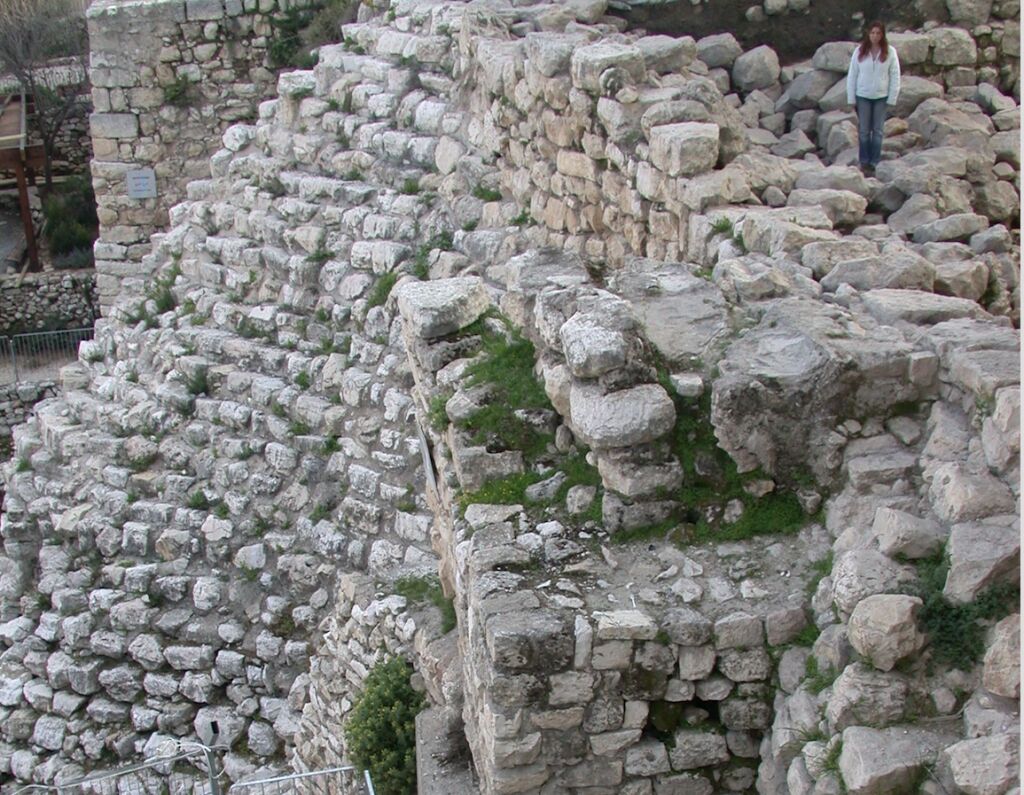JERUSALEM
When the field of biblical archaeology began, its first practitioners believed that in order to understand the material remains of civilizations in the holy land, you needed to understand the Holy Bible. Yet in their excitement to support the biblical narrative, the founders of biblical archaeology often failed to fully vet the biblical and scientific evidence. They rushed to pronounce their discoveries to be biblically significant, and this led to many false conclusions and hasty identifications of sites.
In the following decades, repeated expeditions and improved methods showed that many of these archaeological sites are not the same as those found in the Bible narrative.
Many of the nascent archaeologists in Israel were upset when they learned of these early mistakes in the field of biblical archaeology. However, rather than questioning the interpretation of their teachers, the next generation of archaeologists questioned the validity of the Bible itself.
In cases where there was no known corroborating evidence for a particular period of biblical history, the Bible was no longer assumed to be accurate. Soon these arguments from silence (the idea that evidence does not exist because it hasn’t been found) gave way to scholars refuting the very existence of some biblical personalities.
The most notable of these were King David and King Solomon. Did these men exist? And if so, was their kingdom as great as the Bible claims?
Just a Petty Tribal Chieftain?
Although most traditional biblical archaeologists were not ready to dismiss David and Solomon entirely, some scholars in the mid-1980s to early 1990s did exactly that. However, this argument was challenged by the discovery of the Tel Dan Stele in 1993. Found in secondary use—having been later used in the construction of a wall—the Tel Dan Stele is a small engraving detailing the defeat of Israel at the hands of Syrians. Scholars were stunned when they noted that one of the lines of text read bytdwd, or “House of David.” This was the first extra-biblical reference to King David and the fact that he had a house: a family lineage descending from him.
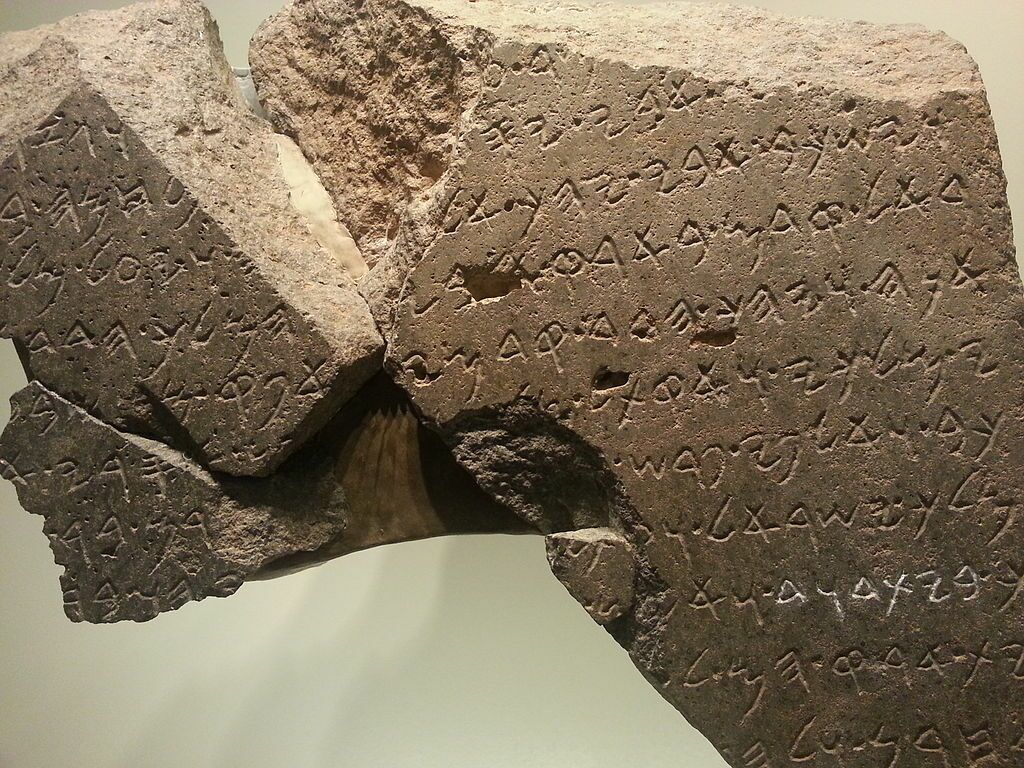
Biblical minimalists at first tried to interpret the characters written on the Tel Dan Stele as saying something—anything—besides “House of David.” Eventually, they conceded that there was no other way to read the inscription. But they did not change their conclusion; they changed their attack. They acknowledged that David and Solomon did exist but said they were not as wealthy, powerful or significant as the Bible describes: They were probably small-time tribal elders who had a small settlement on the hill of Jerusalem.
To the old-school biblical archaeologists, this backlash was ludicrous. Although no finds could be conclusively attributed to the reign of David, a number of grand finds from Solomon’s time had been verified.
The key scripture in this regard is 1 Kings 9:15: “And this is the account of the levy which king Solomon raised; to build the house of the LORD, and his own house, and Millo, and the wall of Jerusalem, and Hazor, and Megiddo, and Gezer.” This verse details a vast building program undertaken by Solomon not just in Jerusalem but throughout the territory belonging to his kingdom. Gezer is in the southern region of Israel, overlooking what was once the lands of the Philistines. Megiddo is in the north-central region, 110 km (70 miles) from Jerusalem and inland from the modern Israeli city of Haifa. Hazor lies north of the Sea of Galilee.
These three ancient cities are some of the most excavated sites in Israel. And what have archaeologists found there? Massive gatehouses, one at the ancient entrance to each city. Each is so similar to the others that this consistent design is known today as the “Israelite gate.” These gatehouses indicate a developed, wealthy, powerful society able to construct sophisticated fortification walls with large gates and impressive structures within them. What’s more, when archaeologists dated these gates by the pottery associated with their construction, they dated to the time of David and Solomon, the 10th century b.c.e. For decades, this was considered solid proof of Solomon’s large-scale building projects described in 1 Kings 9:15.
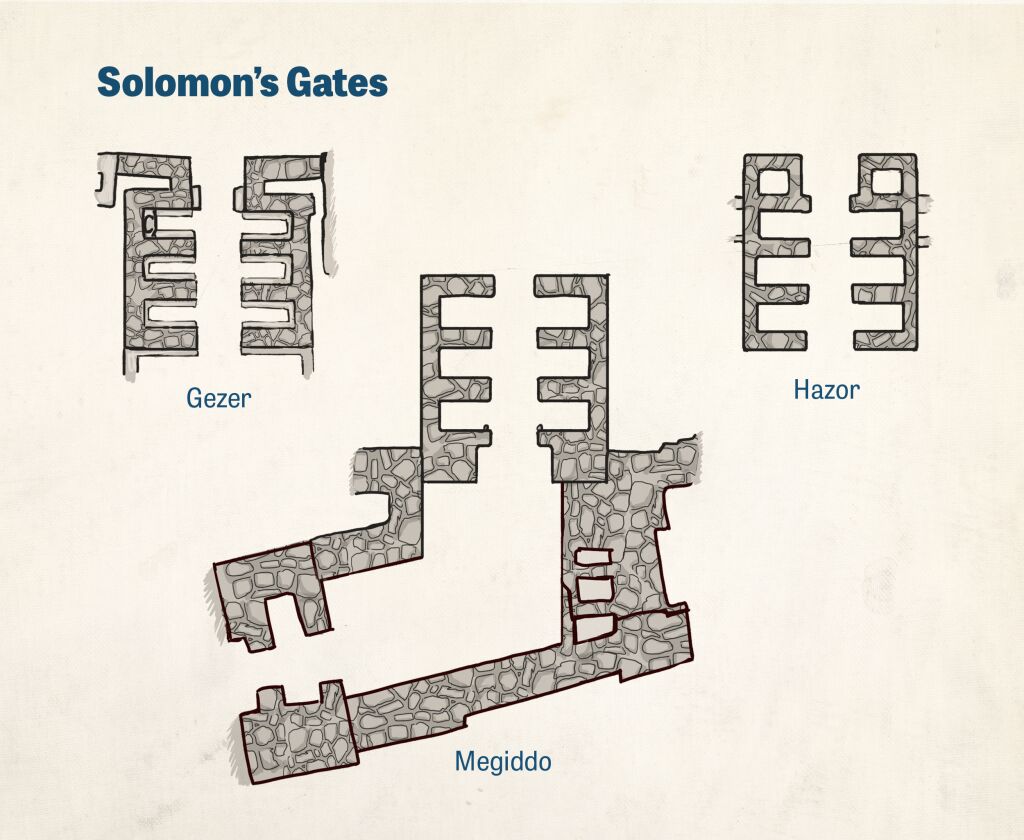
But the minimalists contested this seemingly insurmountable weight of evidence proving Solomon’s building program. Unable to deny the existence of the structures, they attacked the dating of those gates by disputing the age of the pottery.
Low Chronology
Digging during the 1990s at Megiddo—one of the cities described in Solomon’s building program—was Dr. Israel Finkelstein. He is most famous for a 2005 text, The Bible Unearthed. His main thesis in the book is unambiguous: “The world in which the Bible was created was not a mythic realm of great cities and saintly heroes, but a tiny, down-to-earth kingdom where people struggled for their future against the all-too-human fears of war, poverty, injustice, disease, famine and drought. The historical saga contained in the Bible—from Abraham’s encounter with God and his journey to Canaan, to Moses’s deliverance of the children of Israel from bondage, to the rise and fall of the kingdoms of Israel and Judah—was not a miraculous revelation, but a brilliant product of the human imagination” (emphasis added).
Finkelstein’s aim is clear: Convince the reader that biblical Israel, though real, was tiny instead of great, and that its history was mostly imaginary.
In the text and corresponding papers, Finkelstein introduced a new chronology of ancient Israel known as Low Chronology. Traditionally, archaeologists believed that the beginning of David’s reign marks the start of the archaeological period called Iron iia. This period covers a massive increase in building throughout Israel. Traditionally, this building program was associated with David and Solomon.
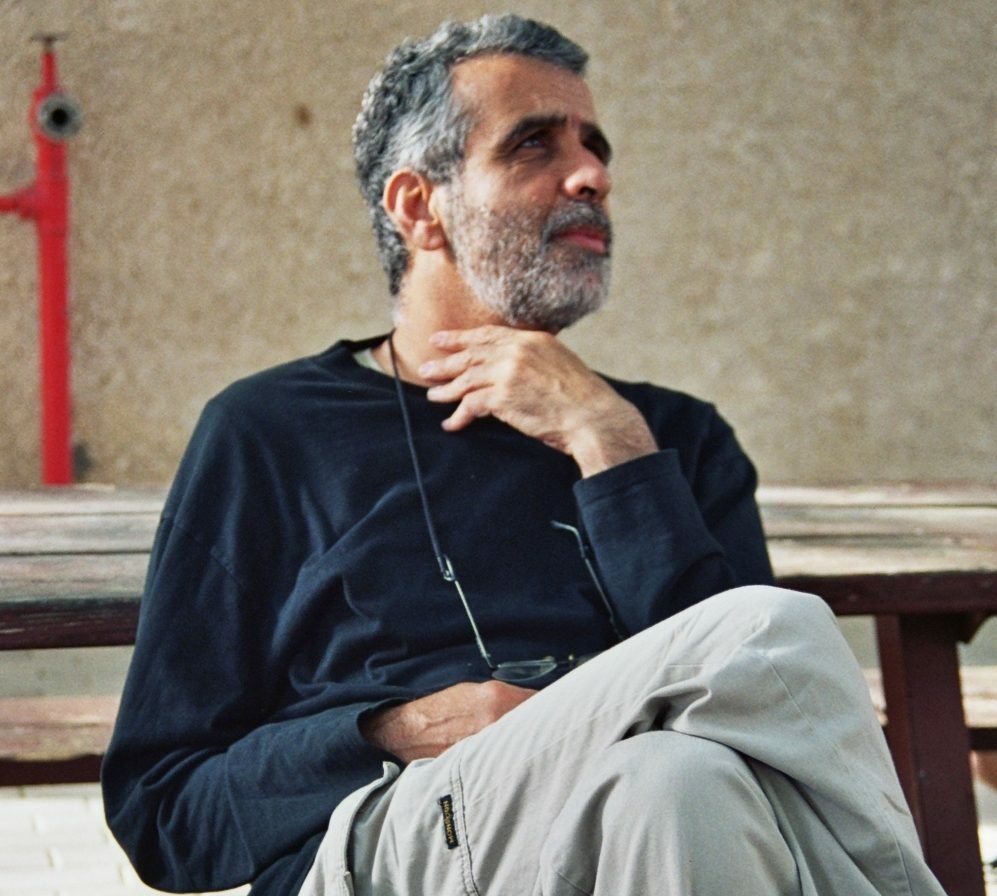
Low chronology is a hypothesis that shifts the start of Iron iia to after David and Solomon died. This chronology claims that monumental buildings, such as the Israelite gate, were not built by Solomon, but by later kings. Finkelstein said that David and Solomon rather belonged to the simpler, far less advanced civilization of Iron i, a period normally associated with the Judges—and with decentralized, weak, unimpressive Israelite trade, institutions, government and construction. That pushes forward the society that built those massive gatehouses out of the period of Solomon to a later king, when such construction would have been more common and less impressive.
Finkelstein’s key evidence is based on an analysis of Carbon-14 samples taken from within Iron iia strata. This evidence is suspect, given that the margin for error in carbon samples from that period is the same amount of time that Dr. Finkelstein wants to push the Iron iia chronology forward.
Discovering David
The same year that Finkelstein published his book, an excavation began in ancient Jerusalem, in the northern part of the City of David. There, archaeologist Dr. Eilat Mazar set out to excavate an area she believed could be the location of King David’s palace. Within days, her spades struck massive rocks that had been lying just under the surface. The huge rocks formed a 30-meter-long wall over 3.5 meters thick. Any structure, modern or ancient, with walls this thick is a truly massive building. From the pottery related to the structure, as well as from several carbon samples, Dr. Mazar was able to date the wall to somewhere between the 11th and 10th century. This is the exact period in which the Bible indicates David built his palace.
After finishing the excavation that year, Mazar declared the most logical conclusion was that this large structure was King David’s palace. The following excavation seasons, from 2006 to 2008, revealed even more walls from the same structure, with the strong eastern wall measuring just under 6 meters (19 feet) thick! What’s more, the 2008 excavation season revealed that this wall actually connected to the very top of the famed Stepped Stone Structure, a 20-meter-high (65-foot-high) retaining wall descending into the Kidron Valley. In effect, it showed that the huge retaining wall was built at the same time expressly to support the eastern wall of the structure above: the palace of King David.
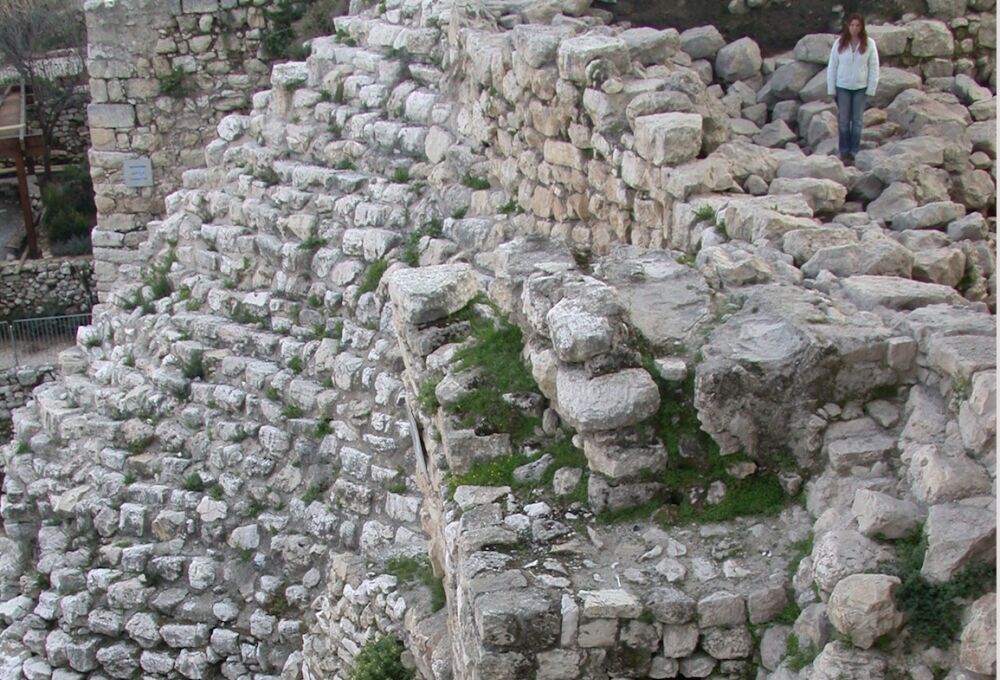
Mazar estimates that only 20 percent of the palace remains have been excavated. But other than the sheer size of the structure, there are other indications that this structure was royal. Forty years before Mazar’s discovery, Dame Kathleen Kenyon, a formidable archaeologist in her own right, excavated in the valley just outside and below the palace walls. She discovered a massive capital—the descriptive support attached to the top of columns—known today as a Proto Aeolic capital. This architectural feature is characteristic of palaces at other Israelite sites such as Megiddo, Samaria and Ramat Rachel. Clearly, this capital (which is featured on the Israeli five-shekel coin today) must have fallen from somewhere important.
Mazar’s discovery was an archaeological broadside on Dr. Finkelstein’s effort to cut David and Solomon down to size. It was a daring claim for a meticulous and respected archaeologist like Mazar to make in the face of biblical minimalists. Led by Finkelstein, the minimalists scoured her published findings to try to discredit her methods or her reasoning in order to disprove her identification of the structure as King David’s palace.
Even tour guides from the City of David tourist center—which perches ironically atop steel supports fastened directly to the bedrock of the palace—thought the idea that they were standing in the area of King David’s palace was far-fetched. Many of them belittled the claim as they led their groups through the massive remains. Granted, 3,000 years of later occupation have made it difficult to make out all the palace walls, but some (like the 6-meter-wide eastern wall) are simply unmistakable.
However, over the course of time since Dr. Mazar’s original designation, even biblical minimalists are starting to acknowledge that although the walls are not inscribed with King David’s name, they are inarguably the foundations of a massive building constructed in the exact biblical location of King David’s palace, and within the (albeit contested) time frame supported by traditional archaeologists, Carbon-14 dating and the Bible.
Soon after Mazar made her discovery, another important find from the same period was announced. Known as Khirbet Qeiyafa, this site was located on the border of Israelite territory against Philistine land. Based on findings at the site, excavator Yossi Garfinkel wrote, “The argument that Judah was an agrarian society until the end of the 10th century b.c.e. and that David and Solomon could not have ruled over a centralized, institutionalized kingdom before then has now been blown to smithereens by our excavation.” Excavations revealed a heavily fortified site. A series of carbon samples were taken from within early Iron iia strata. These samples date at the latest to 969 b.c.e., a date associated by all archaeologists to the time around King David’s death.

The dating of the site to David’s time is so rock-solid that biblical minimalists have had to concede the point. But many then began to claim it was not an Israelite fortress, but rather a Philistine one. And yet, the architecture, pottery styles, inscriptions and lack of pig bones (pork is an unclean meat to the Jews) all indicate that Khirbet Qeiyafa belonged not to David’s archenemy, but to David himself.
Need More Proof? Just Wait
Even with these and other discoveries testifying to the existence of both David and Solomon, the battle for historical truth still rages in academic circles in Israel. The biblical minimalists’ story keeps changing as they try to match the real world with their main claim that remains consistent: Biblical Israel isn’t what the Bible says it was.
Debate and difference of opinion is important for any scientific assertion—but not as important as intellectual honesty.
And intellectual honesty, or the lack thereof, has real consequences. The very heated and public debate about David and Solomon has tainted the public’s receptivity to past and future discoveries that have biblical significance. Because critics have impugned the biblical account, many assume that the Bible’s descriptions have been scientifically disproved, when in reality they have merely been academically contested.
Over the past 30 years, scholars have tried to undermine the Bible as a historically accurate document. Many have been motivated by a mixture of facts and agenda. These scholars have taught the next generation of Israeli archaeologists and historians a baseless sense of skepticism about the Bible’s historical records. That bias is as equally unfair as—and less well-founded than—the bias that led early biblical archaeologists to their original misidentifications. This contrary bias has led biblical minimalists to misidentifications of their own.
Dr. Walter C. Kaiser Jr. addresses this growing bias against the historicity of the Bible in his foreword to The Popular Handbook of Archaeology and the Bible (2013): “The case for the reliability of the persons and events of the Bible becomes more needed and more necessary each day as the newer generation’s anti-biblical thesis takes a greater hold on the hearts and minds of its members.”
An intellectually honest archaeologist will examine the stones, pottery shards and other evidences of habitation for what they are. And if they match an ancient text—even if that text is the Bible—then that text is right.
We live in a time when technological advancement in the field of archaeology has led to an explosion of discoveries that are proving the Bible to be an accurate historical text. More and more excavation and scholarship is taking place. More and more evidence is being unearthed. Artifacts that match the biblical record are emerging faster than ever. Biblical minimalists and maximalists and everyone in between still argue back and forth, but the more evidence that emerges, the more interesting the debate becomes.

Click to watch a video of its discovery.
Dr. Mazar is a good example of the latter group: She is a credentialed scientist, serious-minded and thorough. Controversial as her conclusions are, her overall methodology is undisputed. Less knowledgeable or less scrupulous critics accuse Dr. Mazar of being a religious fundamentalist with an obvious bias to “prove the Bible true.” Those who know her know that she is not religious at all but respects the Bible as a historical document. To her, the Bible details the events of her forefathers, chronicling the history of her Israelite ancestors. And for that, she holds it dear.
Also, the Bible shows her where to dig.
Continuing in this foreword by Dr. Walter C. Kaiser Jr: “Meanwhile, the evidence for the truthfulness and historicity of the Bible continues to mount up as never before. Just when skepticism seems to be making the most noise, we are being flooded with an overwhelming amount of real, hard evidences that demand a verdict opposite to what skeptics, revisionists, minimalists and deconstructionists are clamoring for in their current worldviews and life views. Never has any previous generation seen the amount and significance of evidences that are now available to us today.”
For many, skepticism surrounding the Bible will remain, regardless of how many artifacts are discovered. Many continue to use arguments from silence to discredit biblical history as fable. But it was similar arguments of silence that led people to believe David and Solomon never existed. Now we know that they did. And that they built a kingdom of biblical proportions.
